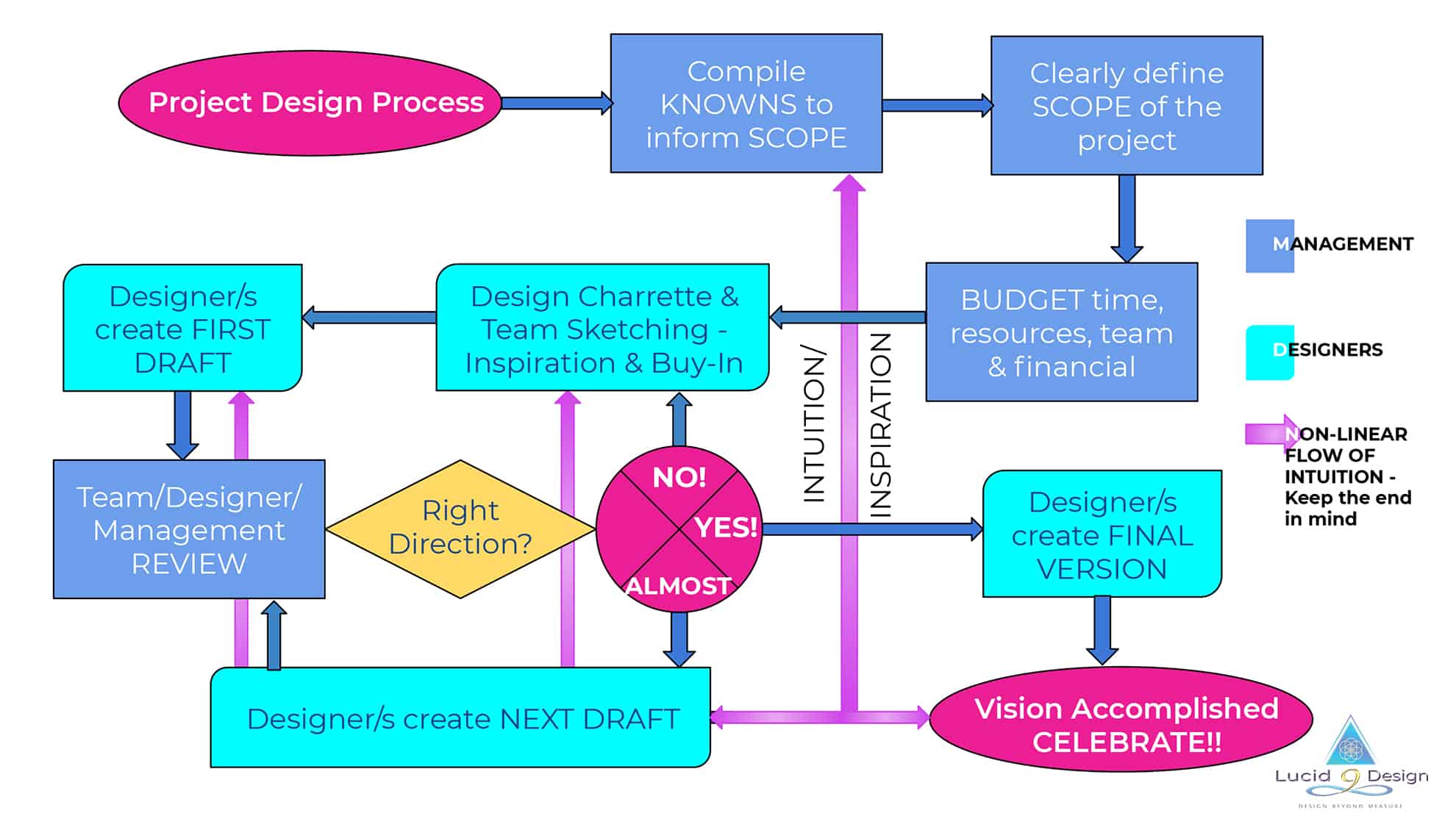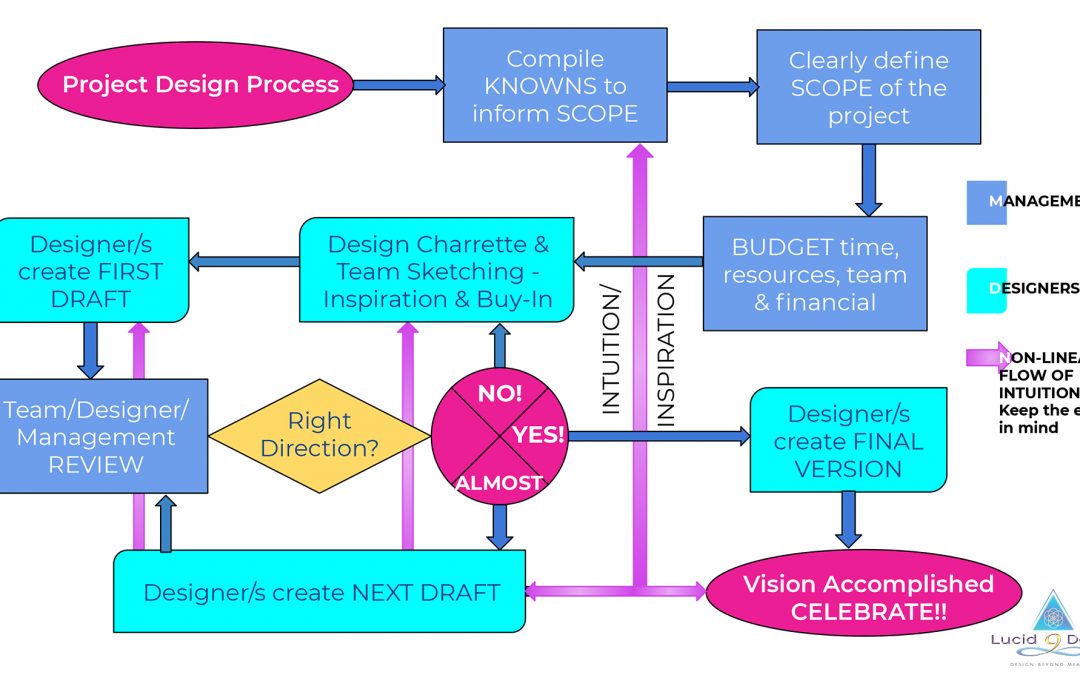Everyone wants the design process to be simple, easy, complete and enjoyable. And quite often that is the experience clients have. Inherent in designing are a myriad of unknowns and decisions to be made. When surprises show up in the creative flow, it’s smart to have an eagle eye view of possible twists and turns that can potentially slow down or alter the course of the project completion.
The Labyrinth of Design Process Flow
While this diagram may look like an initiation to the Maze of No Return, or maybe a tangled bowl of noodle veggie soup, it actually shows how flexible and prepared one can be in anticipation of the work at hand. The design process is non-linear when the creative right side of the brain gets involved.
As a guide, start by looking at the pink ovals, starting at the top left, and ending at the bottom right. Right!! That’s where we are going! Woot, woot! Don’t worry about what’s in between. A good designer will walk you through the maze, ideally helping avoid going around in circles where the gold “Right Direction?” diamond is.
Notice on the far right, a code to the colors.
- Management may be you, the project owner. Or it may be who you represent in the project. It may include investors, or your partner or spouse. It is the designer’s client, and whomever will be making decisions.
- Designers may be one or a team of people creating and making design decisions. That may even include collaboration with the client or management.
Where do you come into the picture? The colors will help you decide that.

Get familiar with Design Process terms:
Design Charrette
A Design Charrette is an intense period of design or planning activity.
The word charrette may refer to any collaborative session in which a group of designers drafts a solution to a design problem.
While the structure of a charrette varies, depending on the design problem and the individuals in the group, charrettes often take place in multiple sessions. When more than a few people are involved, the group divides into sub-groups. Each sub-group then presents its work to the full group as material for further dialogue. Such charrettes serve as a way of quickly generating a design solution while integrating the aptitudes and interests of a diverse group of people. Although the structure of charrettes may vary, the general idea of a charrette is to create an innovative atmosphere in which a diverse group of stakeholders (includes clients, customers, investors and managers) can collaborate to “generate visions for the future”. (from Wikipedia)
Scope
The Scope is the defined boundaries and clear elements of the deliverables of the project. It is specific in spelling out the quantities, the details, and also the essence or vision. It defines tangible and non-tangible products.
This stage involves getting information required to start a project, and the features the product will ideally have that will meet its stakeholders requirements.
- Project Scope: “The work that needs to be accomplished to deliver a product, service, or result with the specified features and functions.”
- Product Scope: “The features and functions that characterize a product, service, or result.”
Scope Creep
Scope Creep refers to uncontrolled or undesirable growth in a project’s scope after the project begins. It can be a result of a project is not properly defined, documented, or managed. It is generally considered harmful, as it causes cost over runs, time delays and results in or reflects existing team incoherence.
Takeaways for Design Process Success
- Avoid multiple loops around the gold diamond by thoroughly and accurately completing the first 3 steps – the blue boxes of the flow chart.
- Stay committed to clear communication and intentional cooperation.
- Begin with the end in mind, always making decisions based on the vision.
- It’s the journey AND the destination. It’s ok to agree to take pauses along the way, or to revise the scope, budget and knowns when needed.
- Passion, humor and a light heart can go a long way in making the design process flow with ease and joy.
Share your design process wisdom, thoughts or questions
I’d love for you to leave a comment below about what has worked for you. If you have inspiring projects you have completed, please share below. Any questions? Leave them below, or contact me.


Thank you.
You’re welcome. Its been a useful guide for many.